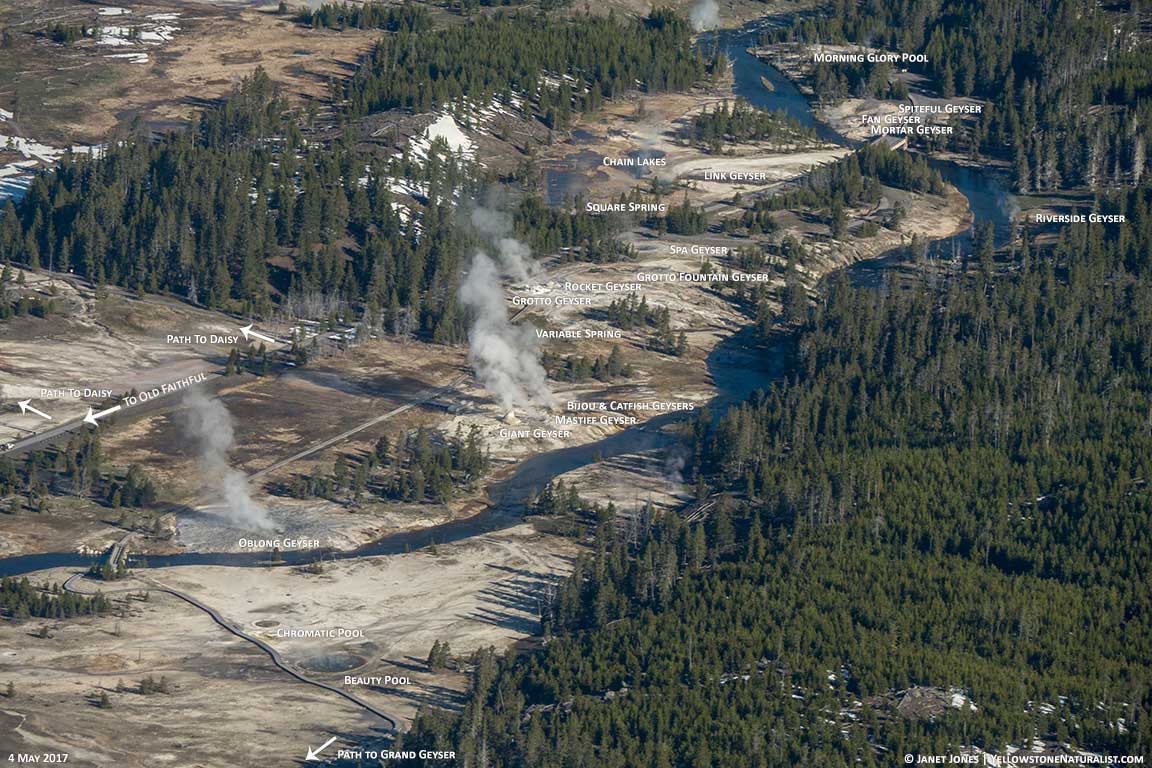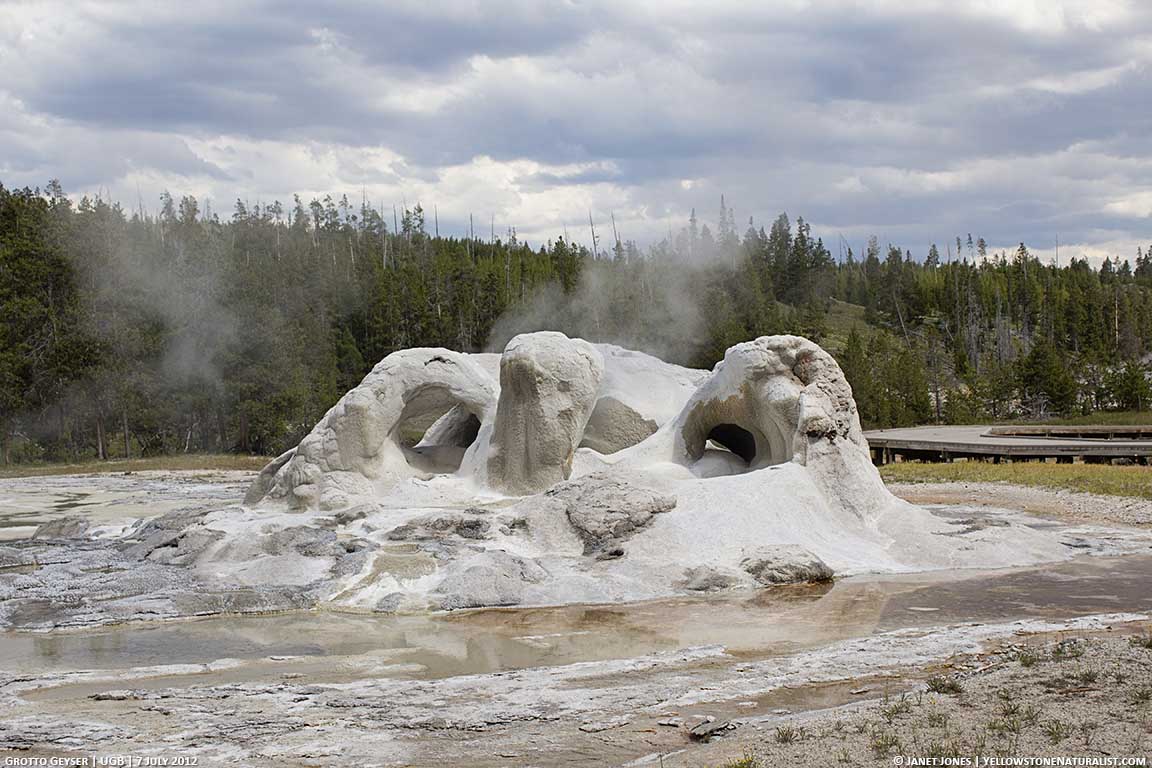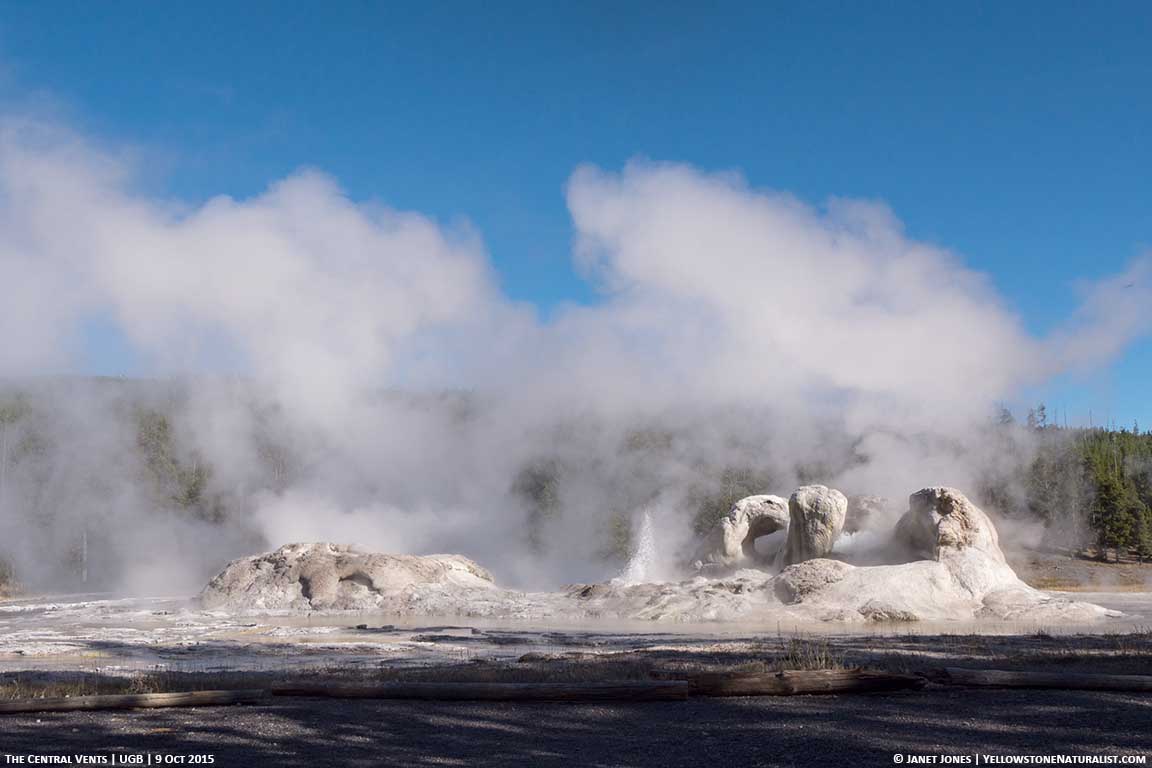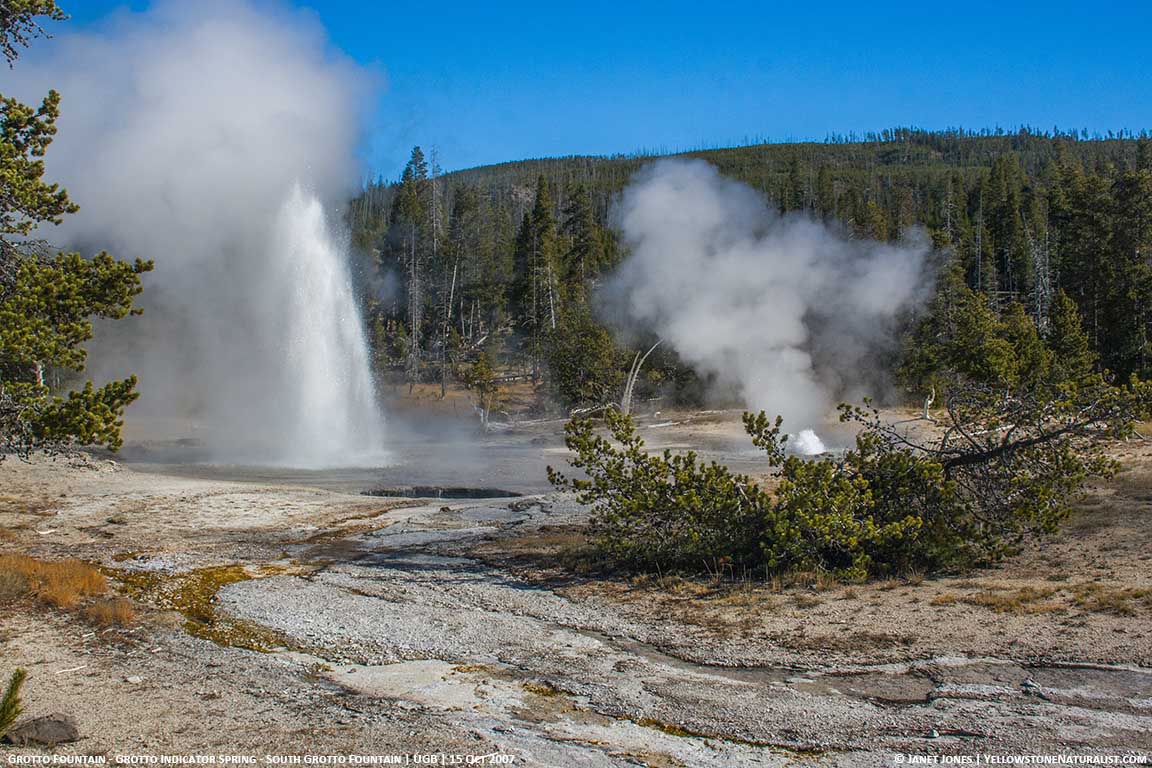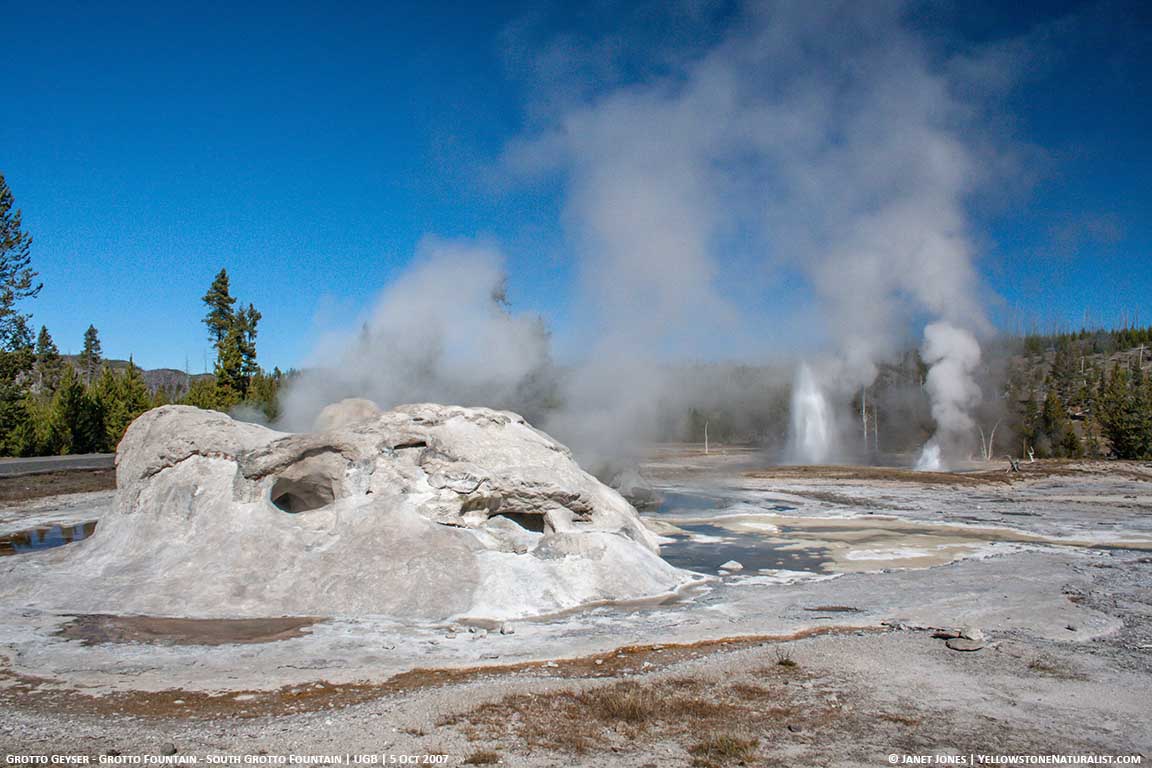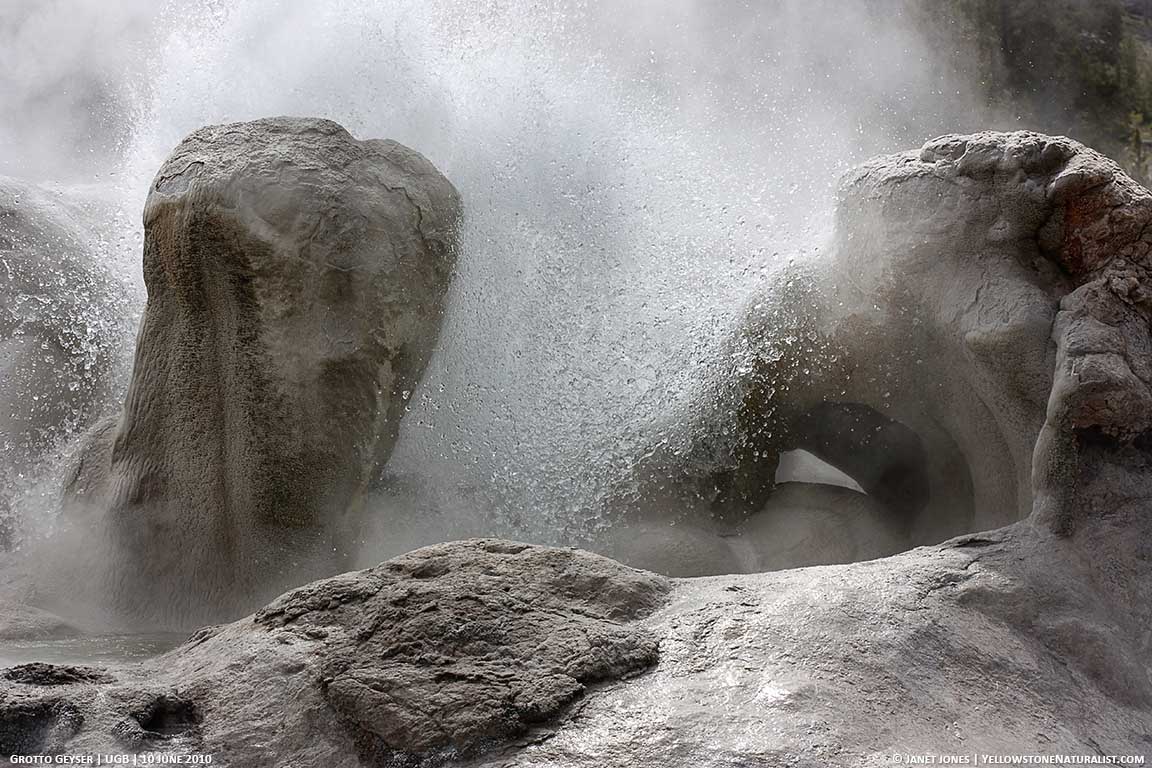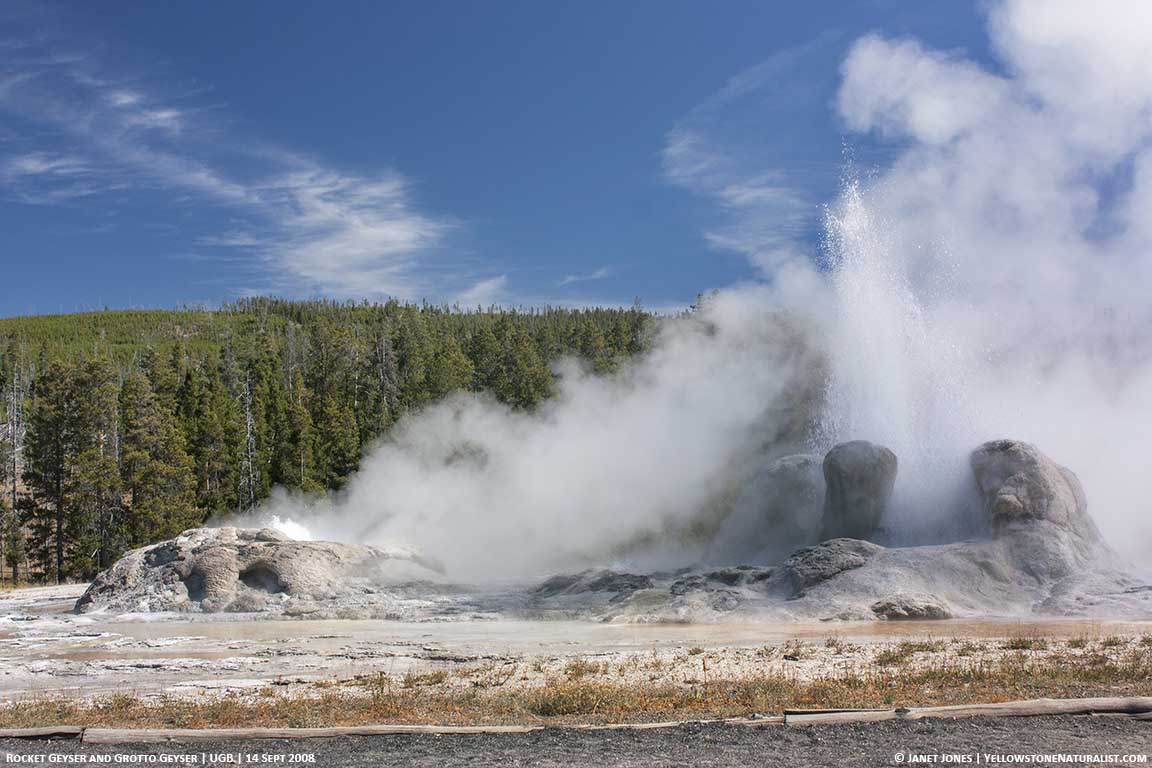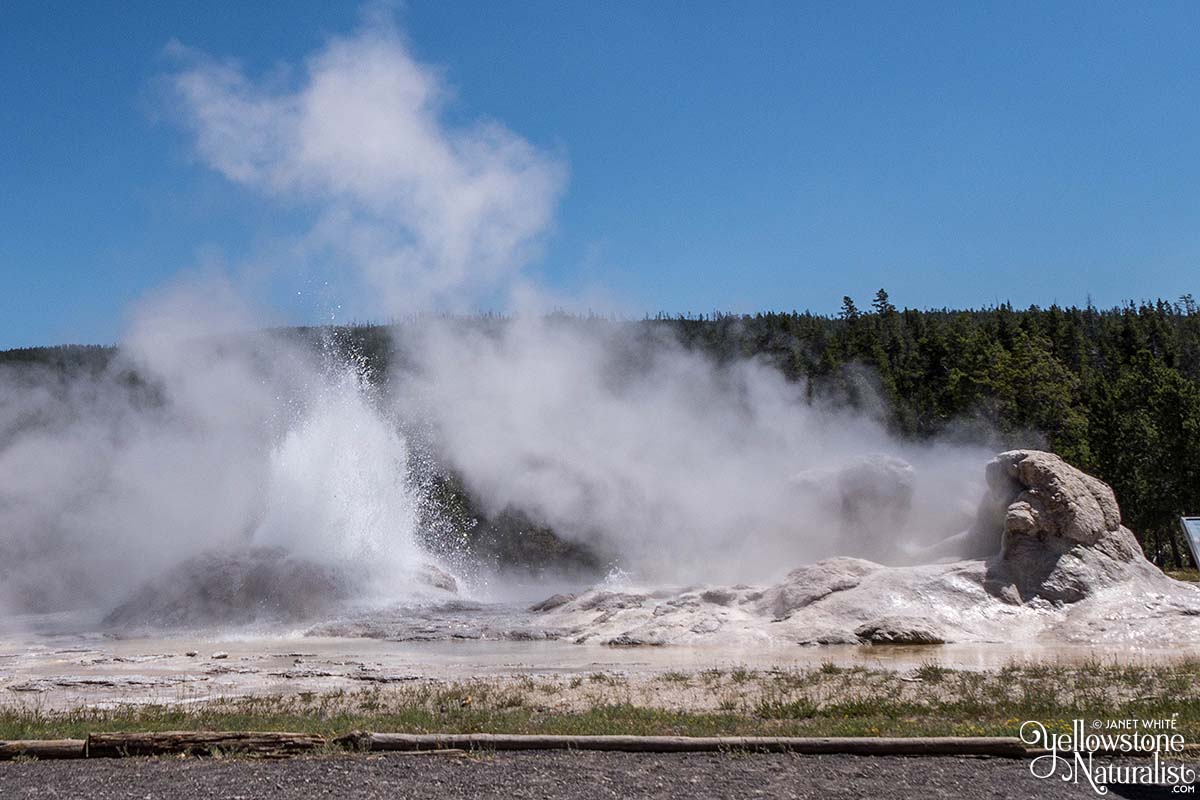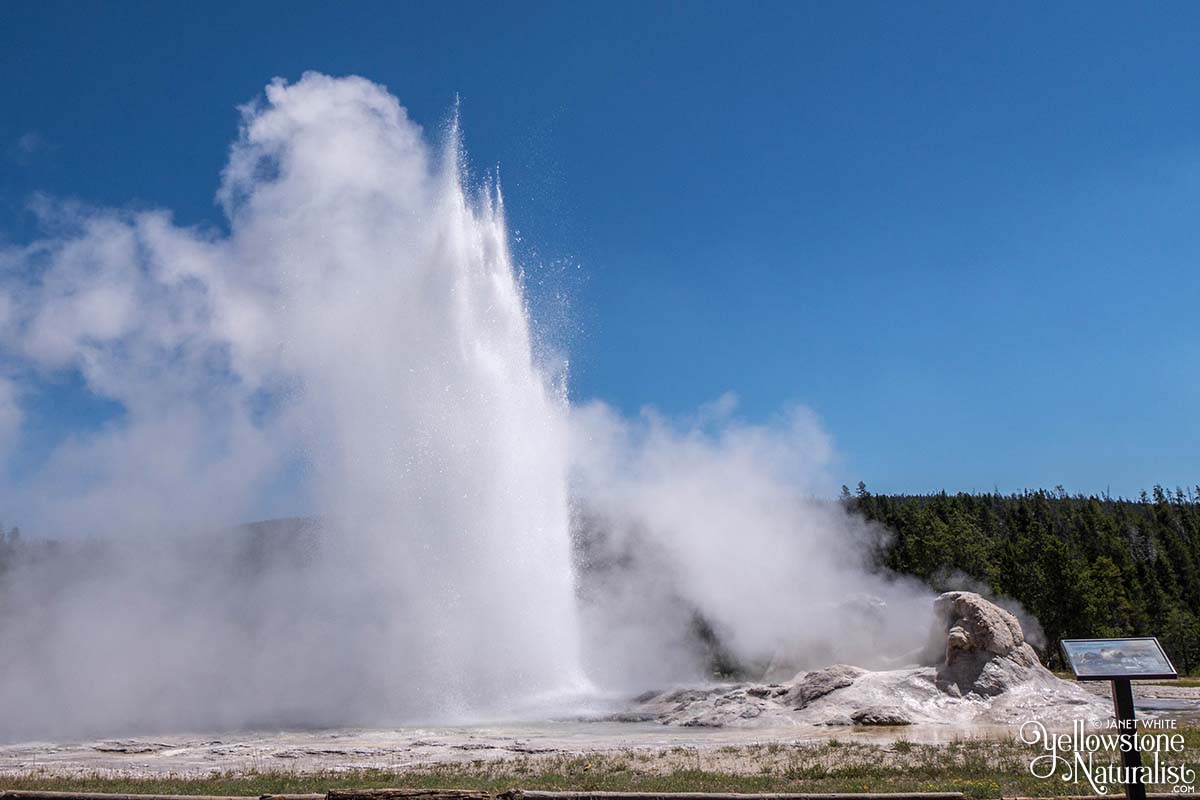Get to know Grotto Geyser
Grotto Geyser has one of the most unusual cones that attracts attention whether or not the geyser is erupting. It’s also closely related to other geysers in the area. In this post, we’ll take a look at not only Grotto Geyser, but also a bit about how geysers are connected underground.
THE BASICS
- Grotto Geyser eruptions are mainly 8 to 15 feet high, but the initial burst can reach 40 to 50 feet.
- The duration of the eruptions varies from ten minutes to a day or more.
- Sometimes neighboring Grotto Fountain and South Grotto Fountain geysers erupt prior to the start of Grotto Geyer. Grotto Fountain Geyser reaches 30 to 50 feet while South Grotto Fountain reaches about 10 feet high.
- Grotto’s Indicator Spring will ebb and fill a few times prior to an eruption of Grotto.
WHERE IT’S LOCATED
Grotto Geyser is located “down basin.” This term used by geyser gazers means it’s beyond Castle and Grand Geysers. There are a couple of ways to reach Grotto. You can either take a stroll around Geyser Hill and then head over to the Grand Geyser area. From there keep following the boardwalk. It will bring you right to Grotto. Or you can take the paved walking/bike path from Old Faithful, as though you’re heading to Morning Glory Pool and before you get there, Grotto Geyser will be on your right.
GROTTO GEYSER’S CONE
Grotto’s cone is unusual with its unique and fantastic shape. It looks like Dr. Seuss was allowed to design a geyser. It caught the attention of the Washburn party in 1870. During their short visit to the Upper Geyser Basin, they saw a tremendous number of large geysers and named many of them. Grotto is one of those they watched, enjoyed and named.
The cone likely formed when the spring broke out suddenly in the middle of a small grove of trees. The trees may have died earlier from the thermal heat expanding in the area. Trees can only survive when the soil around the roots is cool enough and doesn’t “drink” the silica-rich water. If the temperature of the soil rises too high, the trees will die as the roots cook. They will also die if they drink the thermal water as the mineral in the water (silica) clogs up the system and turns the base of the trunks white while the tops stay dark (known as bobby socks trees).
The spring at the base of the trees must have had frequent enough eruptions to coat the trunks in silica, bending them over with the weight and heat. One trunk must have remained standing that now forms the central vertical column in Grotto’s cone.
LOCAL CONNECTIONS
Grotto Geyser is the namesake of the Grotto Group of geysers with known connections based on observations above ground. This includes Rocket Geyser, The Central Vents (between Rocket and Grotto), Grotto’s Indicator Spring, Grotto Fountain, South Grotto Fountain, Startling Geyser, Variable Spring, and Marathon Pool. Other posts or pages will go through more details on these thermal features, but in this post, knowing the basics of a few of them will help you know what to watch for when waiting for Grotto to start.
INDICATORS OF AN ERUPTION OF GROTTO GEYSER
A little farther down the walkway toward Riverside Geyser and Morning Glory Pool is the location of Grotto’s Indicator Spring and Grotto Fountain and South Grotto Fountain. When checking this area, look for water in the Indicator Spring. A few hours before Grotto erupts water will come into view as it rises in this system. The water will rise and fall periodically and you may see bubbling from the small cone of Grotto Fountain. The closer to the start of Grotto’s eruption, the stronger the boiling in South Grotto Fountain. This may be all you see prior to some starts of Grotto Geyser.
However, on other occasions, Grotto Fountain erupts a few minutes prior to the start of Grotto, making for a lovely indicator. South Grotto Fountain may or may not join in. Once Grotto Fountain begins, an eruption of Grotto Geyser is usually only a few minutes away.
GROTTO GEYSER ERUPTIONS
The first few minutes of a Grotto Geyser eruption produce the tallest bursts. These can reach up to 50 feet or more. The official start time of an eruption is taken when the first burst of water comes through the “back” opening. Then it settles into a nice cycle of bursts that can last from 10 minutes to many hours.
CONNECTION WITH ROCKET GEYSER
Rocket Geyser is the large cone to the “left” of Grotto and is closely connected. When Grotto Geyser starts its eruption, you’ll also see Rocket Geyser splashing as well. About 1 1/2 to 2 hours into the eruption, the energy may shift. Grotto will go quiet and Rocket Geyser can have a major eruption that reaches 30 to 50 feet. Then the energy shifts back to Grotto.
CONNECTION WITH GIANT GEYSER
In past decades, there were bits and pieces written in reports that stated an observed connection between Grotto Geyser and Giant Geyser. Yet what they saw was never included.
In 1988, Giant Geyser started an active phase. These can last a year or two. Scott Bryan along with many other geyser gazers and NPS staff decided to take the opportunity to focus on this connection. What they learned is that, at least in that year, Grotto Geyser had short and long eruptions. We now refer to the long eruptions as “marathon” eruptions. And at least in 2007 and 2008 when Giant was also in an active phase, these marathon eruptions seemed to help trigger an eruption of Giant by perhaps draining enough water from the system. In the current active phase of Giant, this doesn’t seem to be the case. Of course, with Steamboat also in an active phase, we have multiple geyser basins where geyser gazers choose to be.
IN CONCLUSION
Grotto Geyser is worth the walk to see. And, if you find yourself intrigued by the connections between Geysers, this is a good spot to start. The area also has the added benefit of shade in the summertime.
